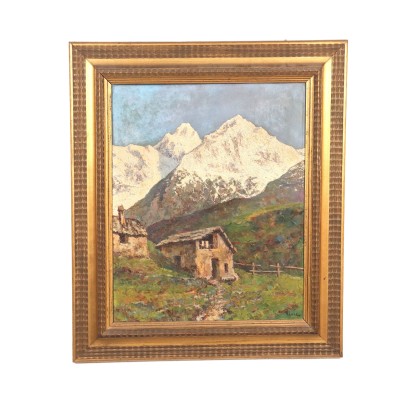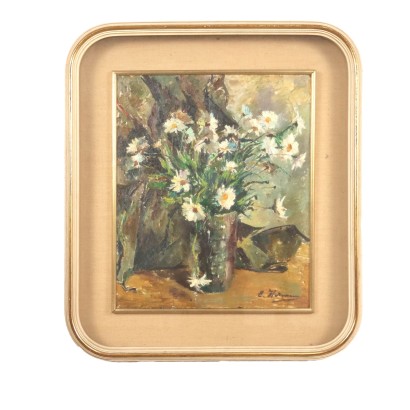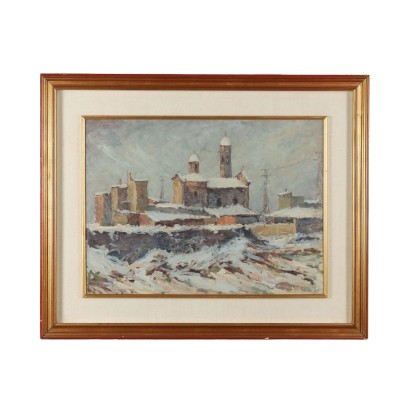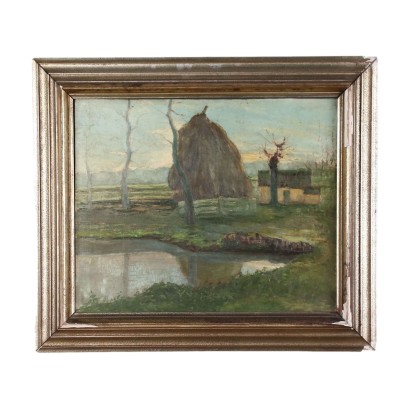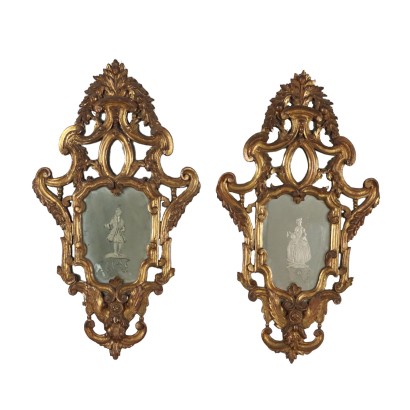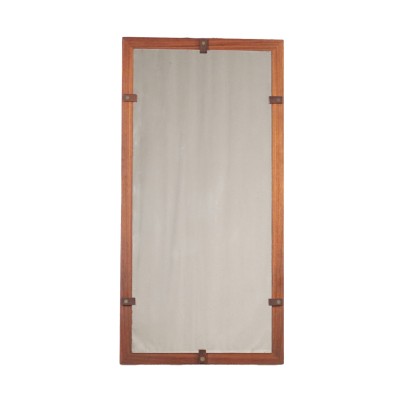V. Ghione Oil on Wooden Table Italy 1940s-1950s - Becca di Nono e Monte Emilius, Valle d'Aosta
Features
Becca di Nono e Monte Emilius, Valle d'Aosta
Artist: Vincenzo Ghione (XX)
Artwork title: Becca di nono e Monte Emilius, Valle d'Aosta
Age: 20th Century / 1901 - 2000
Subject: Landscape
Origin: Italy
Artistic technique: Painting
Technical specification: Oil on Board
Description : Becca di nono e Monte Emilius, Valle d'Aosta
Oil on the table. Signed lower left. At the back this title and location. Little is known about this Piedmontese artist, a landscape painter who devoted himself above all to representing glimpses and views of the Piedmontese and Aosta Valley Alps. This work offers a glimpse of Mount Emilius and the Becca di Nono peak, two peaks of the Graian Alps, located in Valle d'Aosta, in the immediate vicinity of Aosta of which they are the symbol. The painting is presented in a styled frame.
Product Condition:
Product in good condition, with small signs of wear.
Frame Size (cm):
Height: 100
Width: 86
Depth: 5
Artwork dimensions (cm):
Height: 76
Width: 62



